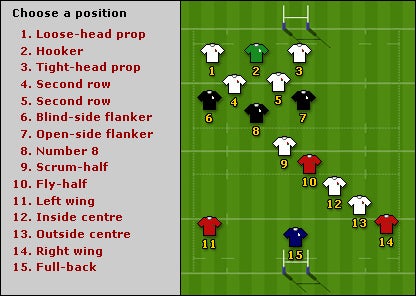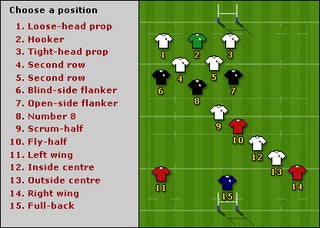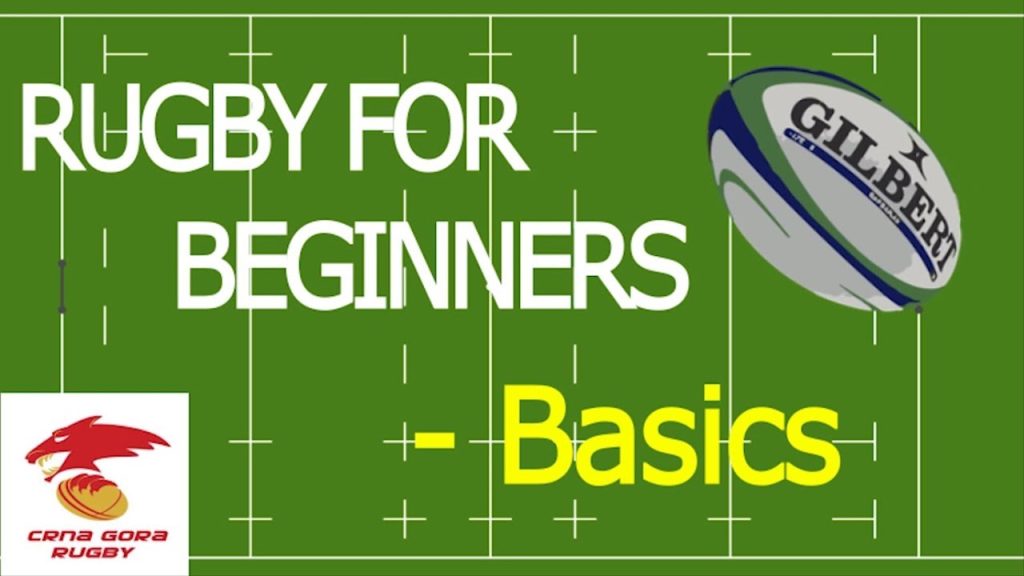Rugby is an exciting and challenging sport. It’s loved by millions worldwide.
If you’ve ever watched a game and felt the urge to join in, you’re not alone. Rugby combines strategy, teamwork, and physical fitness, making it a unique sport to learn. For beginners, understanding the basics can be daunting. Where do you start?
What rules should you know? This guide will break down the essentials. We’ll help you grasp the core concepts and get you ready to hit the field. Whether you’re looking to join a local club or just want to enjoy a game with friends, this introduction to rugby will set you on the right path. Let’s dive into the world of rugby and discover how you can start playing.
Introduction To Rugby
Welcome to the exciting world of rugby! This sport is full of action, teamwork, and strategy. If you’re new to rugby, don’t worry. This guide will help you understand the basics and get started on your rugby journey.
Brief History
Rugby has a rich history that dates back to the early 19th century. The game originated in England and is named after Rugby School, where it was first played. Rugby has since evolved into two main types: Rugby Union and Rugby League.
Rugby Union is the more traditional form of the game, played with 15 players on each team. Rugby League, on the other hand, has 13 players per team and some different rules. Both forms are popular worldwide, with passionate fans and major international competitions.
Basic Rules
Understanding the basic rules of rugby is crucial for beginners. Here are some key points to get you started:
- Objective: Score more points than the opposing team.
- Teams: Each team has 15 players in Rugby Union and 13 in Rugby League.
- Scoring: Points are scored through tries, conversions, penalties, and drop goals.
- Try: A try is worth 5 points in Rugby Union and 4 points in Rugby League. It is scored by grounding the ball in the opponent’s in-goal area.
- Conversion: After a try, a conversion kick can earn 2 extra points.
- Penalty: A penalty kick is worth 3 points in Rugby Union and 2 points in Rugby League.
- Drop Goal: A drop goal is worth 3 points in Rugby Union and 1 point in Rugby League.
Players can run with the ball, kick it, or pass it to teammates. Passes must be made backward or sideways. Forward passes are not allowed. Tackling is a key part of defense. Players must bring down the ball carrier to stop their progress.
Rugby is a game of endurance, skill, and strategy. With these basic rules and a bit of practice, you’ll be ready to enjoy playing and watching rugby!
Essential Rugby Gear
Before stepping onto the rugby field, it’s crucial to have the right gear. Proper equipment ensures safety and comfort, allowing you to focus on the game. Let’s explore the essential rugby gear for beginners.
Clothing And Footwear
Rugby clothing is designed for durability and flexibility. Here are the key pieces:
- Rugby Jersey: Made from strong fabric to withstand tackles and pulls.
- Rugby Shorts: These are loose-fitting for freedom of movement.
- Rugby Socks: Long socks that reach the knee, providing support and protection.
- Rugby Boots: Boots with studs for grip on the pitch. Make sure they fit well and offer ankle support.
Protective Equipment
Rugby is a physical sport, so protective gear is essential. Here’s what you need:
- Mouthguard: Protects your teeth and gums. Always wear it during practice and games.
- Headgear: Soft helmet to protect your head from impacts. Not mandatory but recommended.
- Shoulder Pads: Light padding to shield your shoulders and upper body.
- Shin Guards: Optional, but can protect your shins from kicks and scrapes.
| Gear | Purpose |
|---|---|
| Rugby Jersey | Durability and flexibility |
| Rugby Shorts | Freedom of movement |
| Rugby Socks | Support and protection |
| Rugby Boots | Grip and ankle support |
| Mouthguard | Teeth and gum protection |
| Headgear | Head protection |
| Shoulder Pads | Upper body protection |
| Shin Guards | Shin protection |
Rugby Field And Positions
Understanding the rugby field and positions is crucial for beginners. It helps you grasp the basics of the game. Let’s break down the field layout and player roles.
Field Layout
The rugby field is rectangular. It measures about 100 meters long and 70 meters wide. At each end, there are goal posts. These posts form an H-shape.
The field has several key lines. The halfway line splits the field in two. The 22-meter lines mark defensive zones. These lines help players know their positions.
The try lines are at each end of the field. Scoring a try involves grounding the ball beyond this line. The dead-ball line marks the end of the playing area.
Player Positions
Rugby has 15 players on each team. Each player has a specific role. The players are divided into forwards and backs.
Forwards are usually bigger and stronger. They focus on winning the ball. Positions include props, hooker, locks, and flankers. The eighth player is the number 8. They control the ball at the back of the scrum.
Backs are faster and more agile. They handle ball distribution and scoring. Positions include scrum-half, fly-half, centers, wings, and full-back. The scrum-half links the forwards and backs. The fly-half directs play.
Each position has unique responsibilities. Knowing your role improves teamwork and strategy. Understanding these positions helps new players get involved.
Fundamental Skills
Learning the fundamental skills of rugby is essential for beginners. These skills lay the foundation for more complex techniques. Mastering these basics helps you feel confident on the field. Let’s delve into some key skills every beginner should learn.
Passing And Catching
Passing the ball correctly is crucial in rugby. Hold the ball firmly with both hands. Swing your arms sideways to pass. Aim for your teammate’s chest. Practice passing with a friend to improve accuracy. Catching is equally important. Keep your eyes on the ball. Use both hands to catch. Bring the ball to your body to secure it. Good passing and catching keep the game flowing smoothly.
Kicking Techniques
Rugby involves different kicking techniques. The punt kick is the most common. Drop the ball from your hands and kick it before it hits the ground. This kick helps in advancing the ball up the field. The drop kick is used for starting play. Drop the ball and kick it as it bounces off the ground. Practice makes these techniques easier. Focus on your aim and power. Good kicking can turn the game in your favor.
Basic Rugby Moves
Learning to play rugby can be exciting and challenging. Understanding the basic moves is essential for any beginner. These moves form the foundation of the game. Knowing them can make the game more enjoyable and safe.
Tackling
Tackling is a crucial part of rugby. It involves stopping the opponent carrying the ball. Always aim to tackle the player around the waist. Keep your head to one side of the opponent’s body. Use your arms to wrap around their legs. This ensures a safe and effective tackle.
Stay low during the tackle. This lowers your center of gravity. It makes you more stable. Always keep your eyes open and focus on the target. Practice this move regularly to improve your technique and confidence.
Scrummaging
Scrummaging happens after minor rule violations. It involves the forwards from both teams. They pack down into a formation called a scrum. The goal is to gain possession of the ball. Proper positioning and coordination are key in scrummaging. Stay low and push with your legs, not your back.
Engage with your teammates to form a strong unit. Everyone should push in unison. This ensures stability and strength. The hooker uses their foot to secure the ball. This is a team effort and requires practice and communication.

Credit: www.instructables.com
Game Play And Strategies
Understanding the game play and strategies in rugby is crucial for beginners. Rugby can seem complex at first, but learning key tactics helps. Both offensive and defensive strategies are essential. They ensure a balanced game and improve overall performance.
Offensive Tactics
Offensive tactics focus on gaining ground and scoring points. The main aim is to move the ball forward. Use passes, kicks, and runs effectively. Passing the ball quickly between players confuses the defense. Use the space on the field wisely. Look for gaps in the opposing team’s defense.
Effective communication is key. Players must call out their positions. This helps in making quick decisions. Running lines are also important. Players should run in support of the ball carrier. This creates opportunities for offloads and quick passes. Kicking can be a strategic move. A well-placed kick puts pressure on the opposing team.
Defensive Tactics
Defensive tactics aim to prevent the opposing team from scoring. The key is to stay organized. Maintain a strong defensive line. Each player should cover their assigned area. Communication is crucial here too. Call out the opposing players and their movements.
Tackling is a fundamental skill. Aim to tackle low and securely. This stops the ball carrier effectively. Another tactic is to pressure the ball carrier. This forces mistakes and turnovers. Always be ready to react to the play. Anticipate the opposing team’s moves. Stay alert and focused at all times.
Rules And Scoring
Rugby is a thrilling sport that combines skill, strength, and strategy. Understanding the rules and scoring methods is crucial for beginners. This section will provide an overview of how points are scored and common penalties in rugby.
Scoring Methods
In rugby, there are several ways to score points. Here are the main methods:
- Try: A try is worth 5 points. It is scored by grounding the ball in the opponent’s in-goal area.
- Conversion: After a try, the scoring team can kick for a conversion. A successful kick adds 2 points.
- Penalty Kick: A penalty kick is worth 3 points. It is awarded after certain infractions by the opposing team.
- Drop Goal: A drop goal is worth 3 points. It occurs when a player drops the ball and kicks it through the goalposts during open play.
Common Penalties
Penalties are given for breaking the rules. Here are some common penalties in rugby:
- Offside: Players must stay behind the ball. If not, they are offside.
- High Tackle: Tackling above the shoulders is illegal and dangerous.
- Knock-On: If a player drops the ball forward, it results in a knock-on.
- Not Releasing: Players must release the ball after being tackled.
Understanding these penalties can help you play better and avoid mistakes.

Credit: www.youtube.com
Training And Conditioning
Training and conditioning are vital for anyone starting to play rugby. This helps build strength, endurance, and agility. It also reduces the risk of injury. In this section, we will look at fitness drills and skill development. Both are crucial for beginners in rugby.
Fitness Drills
Fitness drills help improve your overall physical condition. Start with simple exercises like jogging and stretching. These activities warm up your muscles. Next, move on to more intense drills like sprints and shuttle runs. These drills boost your speed and stamina. Try circuit training as well. It combines different exercises for a full-body workout. This includes push-ups, sit-ups, and jumping jacks. Always remember to cool down after your drills. This helps your muscles recover and reduces soreness.
Skill Development
Skill development is key to becoming a good rugby player. Begin with basic skills like passing and catching. Practice these skills regularly. Use both hands to become versatile. Work on your tackling technique. Keep your head up and your body low. This makes your tackles more effective. Kicking is another important skill. Practice different types of kicks like punts and drop goals. Use cones to improve your agility and footwork. Set them up in a zigzag pattern and run through them. This helps you change direction quickly during a game.

Credit: www.instructables.com
Frequently Asked Questions
What Is The Basic Objective Of Rugby?
The basic objective of rugby is to score more points than the opposing team. Points can be scored through tries, conversions, penalties, and drop goals.
What Equipment Is Needed To Play Rugby?
To play rugby, you need a rugby ball, appropriate footwear, and protective gear like mouthguards and headgear. A standard rugby kit includes a jersey, shorts, and socks.
How Many Players Are On A Rugby Team?
A standard rugby team consists of 15 players. Each player has a specific position and role on the field.
What Is A Try In Rugby?
A try is when a player grounds the ball in the opponent’s in-goal area. It is worth five points. It is the primary way to score in rugby.
Conclusion
Rugby is a fun and exciting sport. Start with the basics and practice often. Remember to enjoy the game and play safely. Connect with local teams to find support. Follow these tips and you’ll improve quickly. Soon, you’ll feel more confident on the field.
Keep learning and never give up. Happy playing!


